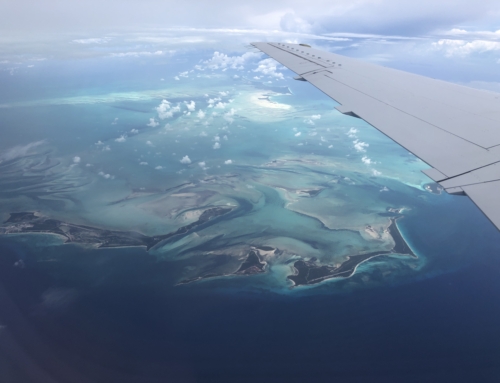Atop a jagged, 50 foot high cliff on the Bahamian island of Eleuthera sit two enormous boulders, known as “The Cow and the Bull.” Each is several times taller than a person; the squatter and wider of the two, the ‘Bull,’ weighs around a thousand tons. The boulders are a tourist attraction, but in recent years, they’ve become much more than that – a scientific mystery that has been intensely scrutinized because of the lessons it could hold about climate change.
Scientists don’t know for sure how these boulders got to their exceptional location – they couldn’t have rolled uphill to the top of the cliff; there’s no higher cliff from which they could have fallen – but they suspect it has something to do with the Atlantic Ocean far below them.
One possible explanation has frightening implications for the present. Two years ago, famed climate scientist James Hansen, drawing on the work of the University of North Carolina at Wilmington geologist Paul Hearty, suggested they had been put in placeby catastrophic superstorms more than 100,000 years ago, at a time of higher seas and dangerous weather dynamics. These conditions, Hansen fears, could return again if polar ice sheets melt rapidly, upending ocean circulation and potentially causing a host of other difficult-to-predict scenarios.
A new scientific study, however, counters that while the boulders were indeed probably put in place by violent waves long ago, it wouldn’t have required superstorms to get them there. Published Monday in the Proceedings of the National Academy of Sciences, the work by Alessio Rovere of the University of Bremen and Leibniz Centre for Tropical Marine Research and his colleagues suggests that even storms of today’s strength could have moved the boulders – at least back when seas were 20 to 30 feet higher, as they were during part of the Eemian warm period, circa 125,000 years ago.
Read the full article here: https://www.ndtv.com/world-news/climate-scientists-are-obsessed-with-two-mysterious-boulders-in-the-bahamas-1769104
31 Oct, 2017 By Chris Mooney






Leave A Comment